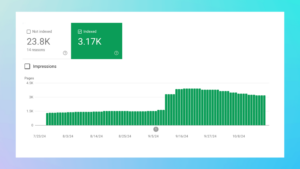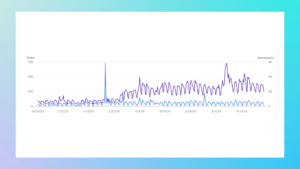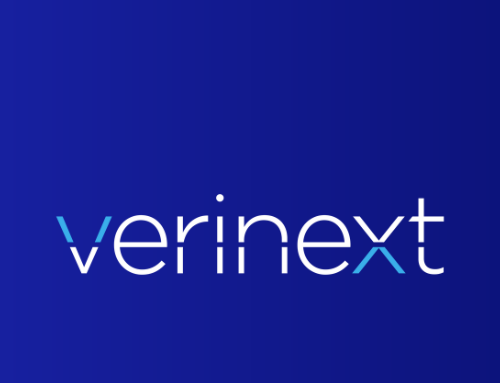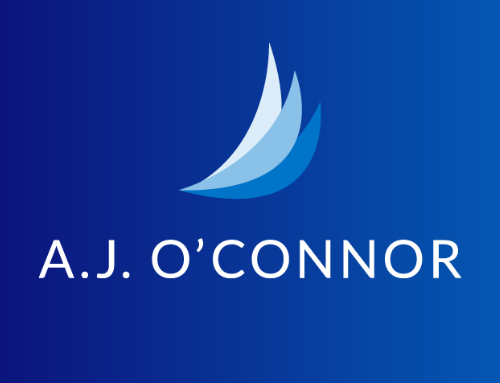Implementing a technical SEO audit to increase website traffic.
Focus on technical SEO increases search engine crawlability and monthly impressions.

CHALLENGE
Website migration errors.
Cirata’s migration from the Wandisco brand looked great online; the new website has a crisp, clean design with straightforward navigation and engagement opportunities. However, the new website architecture prohibited search engines from crawling and indexing high-value content. The indexing errors prevented the domain value from transferring to the new site. Because Cirata’s original domain dates back to 2006, there was tremendous SEO value in resolving the migration errors.
SOLUTION
Technical SEO audit and phased implementation.
High-value pages on the new Cirata website had lost their ranking, organic traffic stagnated and new visitor traffic KPIs needed to be met. Google Search Console reported that less than 25% of the site’s URLs were indexed. To resolve the issues, Avista PR recommended a Technical SEO Audit with a four-phased implementation.
Phase I: Crawling & Indexing
The first phase focused on crawling and indexing the site. Avista worked to create a technical SEO roadmap to map 301 redirects for 404 errors, resolve redirect chains & loops, and fix canonicalized URLs. Using tools such as Screaming Frog SEO Spider to crawl the site, the Avista team exported 404 errors, redirected chains & loops, canonicals, robots.txt directives. Next, the team utilized the Page Indexing Report in Google Search Console, uncovering and exporting non-indexed URLs.
Phase II: Keywords, On-Page SEO, Subdomains
The next phase honed in on:
- Keyword research, priorities & organization
- Export URLs with missing or duplicate titles & metadata
- Subdomains: Identify subdomains that are cannibalizing priority keywords from the main website
Avista set up a URL hierarchy spreadsheet to identify and prioritize high-value keywords with indexed URLs and ranking. Compounding these with updated competitor research helped the team identify keyword gaps in blog, video, and resource content, offering opportunities to better the already improving SEO.
Phase III: Internal Links, Sitemap, Optimize PDFs, Images
Internal Links: Avista built an internal linking strategy & worksheet for the development team. The internal links acted like a roadmap, helping search engines discover and understand website pages. Without internal links, search engines won’t prioritize certain pages over others within large websites. Internal links also improve user navigation and keep visitors on your site longer, reducing bounce rates.
Sitemap: Avista then resubmitted the sitemap to Google Search Console. Sitemaps provide search engines with a complete index of a website’s pages and their relationships. Submitting a sitemap through Google Search Console ensures faster discovery of new or updated content, and is particularly valuable for large sites with many subtopics, such as Cirata.
PDF Optimization: Avista followed by creating a PDF optimization guide for the development team to increase PDF indexing and improve rankings. Google currently has hundreds of millions of PDFs in its index. Most PDF optimization recommendations center around speed and load time:
- Optimize PDF for fast web view
- Use standard fonts
- Use vector-based images when possible, or use monochrome bitmap images
See Search Engine Journal for a complete list of PDF optimization tips.
Image Optimization: With over 250 images on the main site, the Avista team then created a priority image optimization guide to align with the keyword priorities.
Phase IV: Video SEO
Lastly, Avista’s team tackled video SEO. According to Google’s Video SEO Guide, videos can appear in several different places on Google, including the main search results page, Video mode, Google Images, and Discover. Video SEO can increase visibility and boost click-through and engagement rates. Due to the high number of videos on the site and the website CMS, we recommended a video-structured data strategy instead of using special markup on the video sitemap. This strategy ensured each video enhanced the website.
RESULTS
Improving crawl efficiency drives more relevant website traffic.
By improving Cirata’s crawl efficiency, search engines can now better understand content priorities, deliver important landing pages instead of the home page and give crawlers logical pathways to provide URLs that align with search queries. After implementing all of Avista’s recommended technical changes, Cirata saw page indexing increase by over 90%.
Image Source: Google Search Console Indexing Report

The client site also saw significant increases in both average monthly impressions and clicks.
Image Source: Google Search Console Performance Report

Before engaging Avista, the Cirata website had an average of 1,900 monthly impressions and 82 clicks. After six months of implementing our phased SEO plan, the website averages increased to 3,285 monthly impressions and 108 clicks, and growing.
Subdomain traffic accounted for a large percentage of the organic search traffic before the technical changes. Once the subdomain redirects and 404 errors were resolved, Cirata watched as overall engagement, impressions, clicks and average positions experienced a substantial increase.






